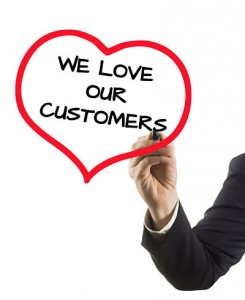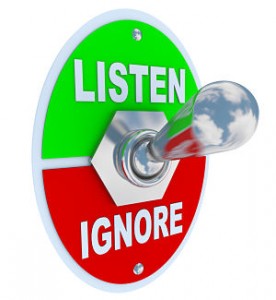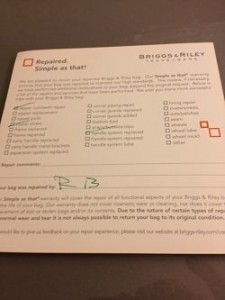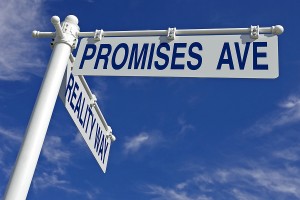5 tips for creating a company culture that connects with your sweet spot clients
September 25, 2014
 An area of marketing that is often overlooked is how important it is to be mindful when creating a company culture. You don’t build a culture to make a sale. But the culture you build, if you’re very clear about your organization’s values and beliefs, can translate your company’s personality and attract right fit prospects. It can also reinforce your current customers’ buying decision.
An area of marketing that is often overlooked is how important it is to be mindful when creating a company culture. You don’t build a culture to make a sale. But the culture you build, if you’re very clear about your organization’s values and beliefs, can translate your company’s personality and attract right fit prospects. It can also reinforce your current customers’ buying decision.
Company culture doesn’t just happen. If you want it to really flourish, you need to make it a priority for your business. You need to build/strengthen the foundation of your culture and then nurture its growth from there.
The challenging aspect of corporate culture, of course, is that culture is shaped by the workforce. Which means it’s an ever-evolving entity. As employees come and go, the culture can be altered in ways that don’t benefit the employees or the organization.
Your culture is too valuable not to protect. Here are a few ways you can ensure that your culture has a consistent foundation that doesn’t ebb and flow over time. If the core is rock solid, then it’s okay if the details shift a little. Ready to start creating a company culture? Keep these tips in mind.
Create a manifesto: Don’t hide your culture. Celebrate it. Capturing the essence of your culture in a statement of beliefs or manifesto will allow you to articulate the key values and behaviors that you want to protect.
Put it in your employee handbook, create a beautiful framed version and hang it proudly in your corporate office and read it out loud to kick off each year’s first staff meeting. You could even ask new hires to sign a commitment to honoring the manifesto on their first day of work.
Weave the culture’s core values into your job descriptions and review process: Employees know that if something is important enough to be a part of their annual review, then it must be pretty important to the company. You can reinforce your culture by rewarding your employees for keeping it alive.
It’s also a built in culture training program for new employees. If they know they’ll be held accountable to their job description when review time comes along, they’re much more likely to adopt those wanted behaviors.
Make your staff part of the solution: If you teach your employees how your company culture contributes to the success of the organization and then invite them to help you protect it, they’ll gladly accept the challenge.
Why not a team that is charged with bringing the culture to life through employee events, customer interactions and rewards programs? They’ll probably surprise you with their innovative ideas and enthusiasm.
Hire for culture, train for skills: Identify the attitudes and behaviors that best support your company’s culture and hire for those traits. You can teach skills but you can’t teach attitude. It’s much easier for a new hire to fit into an environment that aligns with his or her own personal beliefs. Trying to force a square peg into a round hole puts a great deal of stress on both the organization and the new employee.
Share the vision: The purpose of a company culture is to support the organization as it marches towards its future. One way to help the employees understand the importance of protecting and building the culture is by sharing the desired end result.
Once they share the vision, they’ll be inspired to guard everything that will help you all achieve that vision. If anything, they will strengthen your culture to help you get there even faster.
Your culture matters every day. Purposefully creating a company culture will help you recruit and retain your best talent. It supports how you deliver excellence to your customers and it is a compass that guides you towards even greater successes. Be sure you protect it like the valuable asset that it is.
More



 I’ve been working in advertising agencies for almost 30 years now and I’ve had the incredible good fortune to work with some amazing clients over the years. Early in my career, before I had the deciding vote on who we’d serve, I also worked with some real jerks.
I’ve been working in advertising agencies for almost 30 years now and I’ve had the incredible good fortune to work with some amazing clients over the years. Early in my career, before I had the deciding vote on who we’d serve, I also worked with some real jerks. I live in Des Moines, Iowa and fly in and out of the
I live in Des Moines, Iowa and fly in and out of the 

 We have to earn our audience’s attention. Let’s see how you’re doing at that.
We have to earn our audience’s attention. Let’s see how you’re doing at that.

![photo[2]_opt](/images/2013/07/photo2_opt.jpg) Fast forward to 10 months after the purchase. The bag has a rip in it.
Fast forward to 10 months after the purchase. The bag has a rip in it. Then, I waited. And waited. I didn’t hear anything from Briggs & Riley. It had been a few weeks and I was just about to reach out to them via their website when voila, my repaired suitcase arrived with this card that outlines what got fixed. And that’s it.
Then, I waited. And waited. I didn’t hear anything from Briggs & Riley. It had been a few weeks and I was just about to reach out to them via their website when voila, my repaired suitcase arrived with this card that outlines what got fixed. And that’s it.
 That’s the age-old question, isn’t it?
That’s the age-old question, isn’t it?